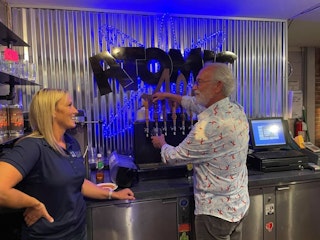A Runway for Readiness on the Home Front
Naval Auxiliary Air Facility (NAAF) Vista
Before it became a civic gathering space, Vista Field played a quieter but vital wartime role. As a naval auxiliary airfield during World War II, it helped prepare thousands of aviation cadets for missions across the globe.
From Farm Airstrip to Naval Training Ground
NAAF Vista, more commonly known as Vista Field, was one of Washington state’s largest U.S. Navy auxiliary airfields. Leased by the Navy in early 1942, the site in Kennewick supported the bustling operations of Naval Air Station Pasco by providing additional space for aviation cadet training, including takeoffs, landings, and formation flying. Before the war, the field was a small municipal strip serving local farmers and recreational pilots under the airport code VSK.
These auxiliary fields were essential to the success of wartime aviation efforts, allowing pilots to master critical skills before deploying into combat zones. While it wasn’t part of the Manhattan Project directly, Vista Field contributed to the broader wartime infrastructure that supported the region’s rapid growth and military mission.
Decommissioned in 2013, Vista Field is now being transformed into a regional town center. Honoring its WWII legacy, the Port of Kennewick reused original 1940s landing strip material in public spaces and incorporated commemorative art to reflect the site’s aviation history and preserve its memory for future generations.

































